Mountain Restaurant
No comments yet
|$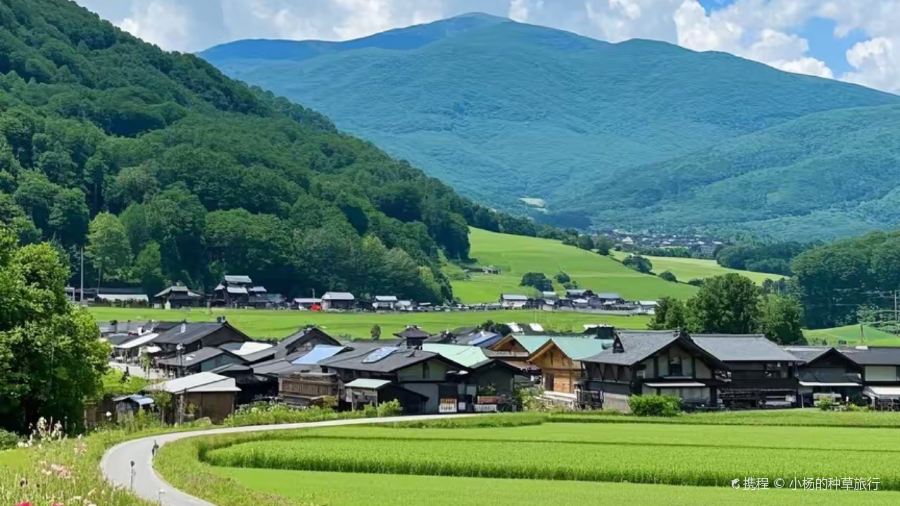
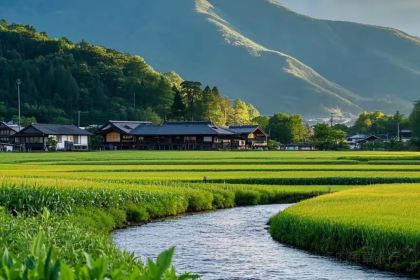
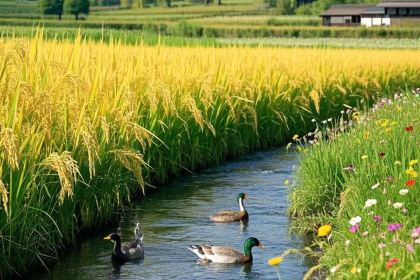
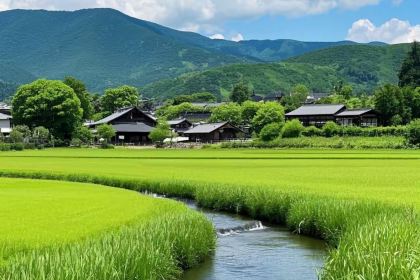
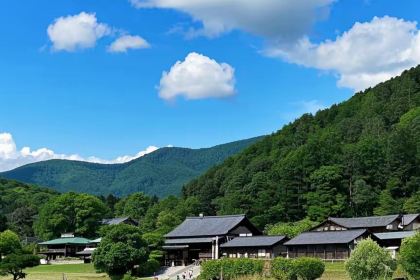
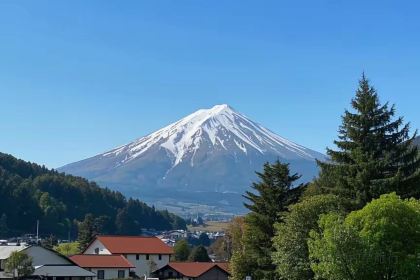
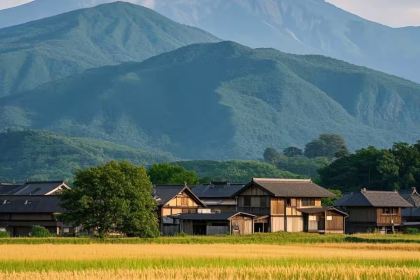
More
+81-25-783-3211
2056-108 Maigo, Minamiuonuma, Niigata Prefecture
 小杨的种草旅行#Creation incentive plan shares 10,000 yuan in cash
[Love] Entering Minamiuonuma City is like opening a wonderful door to a hidden corner of Japan. The surrounding mountains are continuous, and the clouds are lingering in the mountains, casting a mysterious veil over this land, like a dream.
[Glister] Walking along the winding path, the quaint houses on the roadside are scattered in an orderly manner, the roofs are covered with moss, and the cracks in the stone walls are full of green grass buds, full of traces of time. In the distance, the vermilion torii is bright and eye-catching, forming a sharp contrast with the surrounding natural environment, quietly telling the story of the past.
[Rainbow] Shuttled between the rice fields, the breeze blew, the rice waves surged, and the air was filled with a faint rice fragrance. The stream beside the field is clear and the water is gurgling. Occasionally, you can see small fish and shrimps playing in the cracks between the stones. The waterwheel by the stream slowly turns, making a creaking sound, adding a bit of agility to the quiet countryside.
[RedHeart] The food here is even more unforgettable. The fresh ingredients are skillfully cooked. A bowl of rice cooked with Uonuma Koshihikari rice is soft, sweet, simple but touching. Sit together with the enthusiastic locals, share the food, listen to them talk about the bits and pieces of Minami Uonuma City, and the laughter echoes in the house. Minami Uonuma City, with its unique tranquility and beauty, is engraved into the depths of my travel memories and becomes the warmest fragment. #The place where friends are asked about #City Humanities Notes #Niche Discovery Club #Have Fun with Friends
小杨的种草旅行#Creation incentive plan shares 10,000 yuan in cash
[Love] Entering Minamiuonuma City is like opening a wonderful door to a hidden corner of Japan. The surrounding mountains are continuous, and the clouds are lingering in the mountains, casting a mysterious veil over this land, like a dream.
[Glister] Walking along the winding path, the quaint houses on the roadside are scattered in an orderly manner, the roofs are covered with moss, and the cracks in the stone walls are full of green grass buds, full of traces of time. In the distance, the vermilion torii is bright and eye-catching, forming a sharp contrast with the surrounding natural environment, quietly telling the story of the past.
[Rainbow] Shuttled between the rice fields, the breeze blew, the rice waves surged, and the air was filled with a faint rice fragrance. The stream beside the field is clear and the water is gurgling. Occasionally, you can see small fish and shrimps playing in the cracks between the stones. The waterwheel by the stream slowly turns, making a creaking sound, adding a bit of agility to the quiet countryside.
[RedHeart] The food here is even more unforgettable. The fresh ingredients are skillfully cooked. A bowl of rice cooked with Uonuma Koshihikari rice is soft, sweet, simple but touching. Sit together with the enthusiastic locals, share the food, listen to them talk about the bits and pieces of Minami Uonuma City, and the laughter echoes in the house. Minami Uonuma City, with its unique tranquility and beauty, is engraved into the depths of my travel memories and becomes the warmest fragment. #The place where friends are asked about #City Humanities Notes #Niche Discovery Club #Have Fun with FriendsReviews of Mountain Restaurant
Some reviews may have been translated by Google Translate
0/5
All (2)
Latest
Photo reviews (2)
#Creation incentive plan shares 10,000 yuan in cash [Love] Entering Minamiuonuma City is like opening a wonderful door to a hidden corner of Japan. The surrounding mountains are continuous, and the clouds are lingering in the mountains, casting a mysterious veil over this land, like a dream. [Glister] Walking along the winding path, the quaint houses on the roadside are scattered in an orderly manner, the roofs are covered with moss, and the cracks in the stone walls are full of green grass buds, full of traces of time. In the distance, the vermilion torii is bright and eye-catching, forming a sharp contrast with the surrounding natural environment, quietly telling the story of the past. [Rainbow] Shuttled between the rice fields, the breeze blew, the rice waves surged, and the air was filled with a faint rice fragrance. The stream beside the field is clear and the water is gurgling. Occasionally, you can see small fish and shrimps playing in the cracks between the stones. The waterwheel by the stream slowly turns, making a creaking sound, adding a bit of agility to the quiet countryside. [RedHeart] The food here is even more unforgettable. The fresh ingredients are skillfully cooked. A bowl of rice cooked with Uonuma Koshihikari rice is soft, sweet, simple but touching. Sit together with the enthusiastic locals, share the food, listen to them talk about the bits and pieces of Minami Uonuma City, and the laughter echoes in the house. Minami Uonuma City, with its unique tranquility and beauty, is engraved into the depths of my travel memories and becomes the warmest fragment. #The place where friends are asked about #City Humanities Notes #Niche Discovery Club #Have Fun with Friends
#創創動計劃分萬萬现金 In Niigata Prefecture, Japan, there is a city that is like a paradise - Minami Uonuma City. It is surrounded by mountains and has picturesque scenery in all seasons, with both snow-covered winter scenes and lush summer forests. It not only has rich natural landscapes, but also inherits ancient cultural traditions. It is a place where people can slow down and feel the true nature of life. Next, follow this guide and walk into Minami Uonuma City to start a different kind of trip. Climate and best travel time Minami Uonuma City has a temperate monsoon climate with distinct four seasons🌳 - Spring (March - May): The average temperature is 5℃ - 15℃, cherry blossoms are in full bloom, and flowers all over the mountains are blooming. It is a good time to enjoy cherry blossoms🌸 - Summer (June - August): The temperature is 15℃ - 25℃, warm and humid, suitable for outdoor activities such as mountaineering and hiking, and you can also enjoy the verdant mountains and clear streams. - Autumn (September - November): The temperature is 5℃ - 15℃, the maple leaves gradually turn red, the forests are dyed, and the whole city seems to be a palette overturned by nature, which is so beautiful that it makes people intoxicated. - Winter (December - February of the following year): The average temperature is -5℃ - 0℃, it is cold and snowy, it is a paradise for ski enthusiasts, and you can also see the dreamy snow scenery❄️ Must-visit attractions 1. Satoyama Jujo: A design hotel transformed from a century-old ancient folk house, the open-air hot spring is rated as "the first superb hot spring in the country". Here, you can soak in the hot spring while admiring the "100 famous mountains in Japan" opposite the cumulus mountain, and enjoy a pleasant time of close contact with nature. The hotel is also decorated with various furniture from well-known designers, such as Sori Yanagi's "Butterfly Stool", Isamu Noguchi's handmade paper lanterns, etc., which perfectly blend tradition and modernity, allowing you to enjoy the hot spring while feeling the charm of art. 2. Uonuma no Sato: Mainly based on the facilities of the Japanese sake brand "Hakkaisan" in Minami Uonuma, you can not only visit the snow room and learn about the local traditional custom of using snow to preserve food, but also taste various fine wines of Hakkaisan in the tasting bar and buy your favorite wine. In addition, Uonuma no Sato also has restaurants, coffee shops and other facilities, where you can spend a whole day leisurely and feel the unique charm of Japanese sake culture🍶 3. Aoki Sake Brewery: Founded in 1717, it has a history of more than 300 years of brewing. The Tsururei series of wines brings out the freshness of the sake rice itself and shows the deliciousness of rice to the greatest extent. The Makino Snow Man series is also very delicious. You can also taste Japanese sake at the Aoki Sake Brewery store on Makino-dori. If you like wine tasting, you must not miss it. 4. Shiozawa Fabric Factory: Honshiozawa is a silk fabric made of raw silk and is designated as a national traditional craft. This factory is one of the nine existing fabric factories in Shiozawa. It is a precious existence that insists on independently completing everything from refining to weaving by its own factory, and most of the production steps are completed manually. When you enter the factory, you can not only see the workers' persistence in traditional craftsmanship, but also appreciate the preciousness of the fabrics. In mid-February and late March every year when there is more sunshine, kimono fitting activities are held here, allowing you to experience the unique charm of Honshiozawa in person. 5. Muikamachi Hakkaiyama Ski Resort: A hidden treasure trove of powder snow, it has the longest and steepest powder snow ski slope in Japan. The 81-person aerial cable car takes you to the top of the mountain, where you can enjoy skiing while enjoying the magnificent view of Hakkaiyama. The longest ski slope is 3,000 meters long, with a vertical drop of 800 meters. There are many exciting ski slopes extending from the top of the mountain to the bottom of the mountain, attracting many advanced skiers to challenge. Specialties 1. Dragon sushi: The ingredients are mostly local fish from Niigata. In season every year, you can also eat the "horse manure sea urchin" from Hirakawa Fisheries. The melt-in-the-mouth taste is unforgettable. The sushi here is not only of high quality, but also very affordable, and it is a delicacy worth a special trip to taste. 2. Koshihikari rice cuisine: The Koshihikari rice produced in Minamiuonuma City enjoys a high reputation in the Japanese market. The rice made with Koshihikari rice has full grains, sweet and soft. In addition to eating it directly, you can also taste various dishes made with Koshihikari rice, such as sushi, rice balls, porridge, etc., and you can feel the fragrance of rice in every bite. 3. Local cuisine Yukimi Gozen: It is jointly prepared by mothers from 11 communities in the Echigo-Tsumari area. It uses local ingredients and is paired with colorful lacquerware. It not only highlights the deliciousness of the Echigo area, but is also full of the ritual sense of winter. It is a food experience that cannot be missed when visiting Minamiuonuma City in winter. 4. Mentaiko and yam: The combination of mentaiko and yam, the salty and fragrant mentaiko and the soft and glutinous yam blend together, with a rich taste. It is a common side dish in local izakayas. It is full of Japanese flavor when you take a bite. Transportation Guide 1. External transportation: Take the Joetsu Shinkansen from Tokyo Station to Echigo Yuzawa Station in just 1 hour and 20 minutes, and then transfer to the conventional line. It takes ten minutes to reach Osawa Station. The whole journey takes less than two hours🚄 2. Internal transportation: Minamiuonuma City’s public transportation is not well developed. Renting a car and driving yourself is a more convenient way to travel, and you can freely go to various attractions. You can also choose to take a taxi, but the cost is relatively high. In the city, you can also rent a bicycle, which allows you to enjoy the scenery along the way and flexibly shuttle through the streets and alleys🚲 Travel Notes 1. Season and clothing: Prepare appropriate clothing according to different seasons. In winter, you must bring enough warm thick cotton clothes, scarves, gloves, snow boots and other cold-proof equipment; in summer, pay attention to sun protection and bring light and breathable clothing and sunscreen products. 2. Language communication: The main local language is Japanese. If the language is not fluent, you can download translation software in advance to facilitate communication. 3. Traffic rules: If you choose to rent a car and drive yourself, you must understand Japan’s traffic rules in advance, which are different from those in China. For example, Japanese vehicles drive on the left, and must be strictly followed and pay attention to driving safety. 4. Respect local culture: When visiting religious sites such as shrines and temples, you must dress appropriately, keep quiet, and follow local worship etiquette. When communicating with local people, you must also respect their customs and lifestyles.